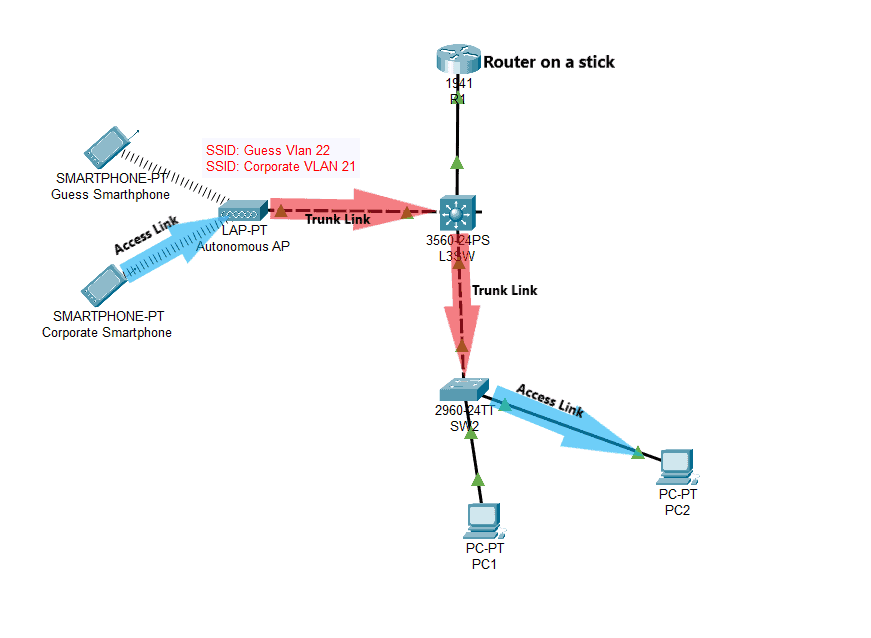One of the two modes of Wireless Access Points that we can use in wireless networks is Autonomous AP. Autonomous APs work as standalone devices with no knowledge of other Access Points (APs). Moreover, Autonomous APs are managed individually unless a management platform, such as Cisco DNA Center and Cisco Prime Infrastructure, is used in the network. Unlike Lightweight Access Point (LAP), which requires a Wireless LAN Controller (WLC), Autonomous Access Points don’t need Wireless LAN Controllers to function. It is independent and standalone, which is suitable to use for small networks.
Autonomous AP Configuration
In this example, we will configure the switch in our Autonomous AP deployment. First, we need to create Vlan 21, which is assigned to Corporate users, and Vlan 22, which is assigned to Guess users. Then we will configure the trunk interface between the AP and the switch to allow multiple Vlans to traverse the link.
L3SW(config)#vlan 21 L3SW(config-vlan)#name Corporate L3SW(config)#vlan 22 L3SW(config-vlan)#name Guess L3SW(config)#interface FastEthernet 0/2 L3SW(config-if)#switchport trunk encapsulation dot1q L3SW(config-if)#switchport mode trunk L3SW(config-if)#switchport trunk allowed vlan 21,22
Autonomous Access Point Traffic Flow
In the network topology below, we used R1 as a Router-on-a-Stick and as a DHCP server for our network. All wireless network traffic has to travel to the Autonomous AP that acts as a central point of access. The Corporate users send Ethernet frames destined to PC2. The Autonomous AP will map it to its associated Corporate VLAN before sending it to upstream L3SW, and when the SW2 receives the Ethernet frame, it will de-encapsulate it and forward it to PC2.
The blue arrow shows the traffic flow of the Ethernet frames without a VLAN tag traversing the access links, while the red arrow shows the flow of the tagged Ethernet frames traversing trunk links.
If the network is growing and you have Autonomous APs deployed, you can convert them to Lightweight Access Points to fit your network. If you have three or more Access Points in the network, it is recommended to use Lightweight APs.
Download our Free CCNA Study Guide PDF for complete notes on all the CCNA 200-301 exam topics in one book.
We recommend the Cisco CCNA Gold Bootcamp as your main CCNA training course. It’s the highest rated Cisco course online with an average rating of 4.8 from over 30,000 public reviews and is the gold standard in CCNA training:
